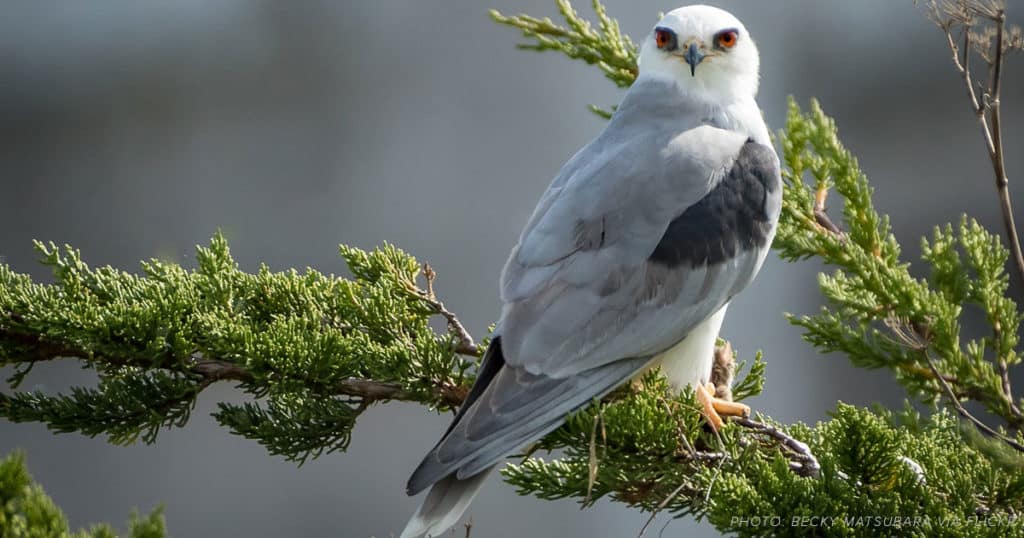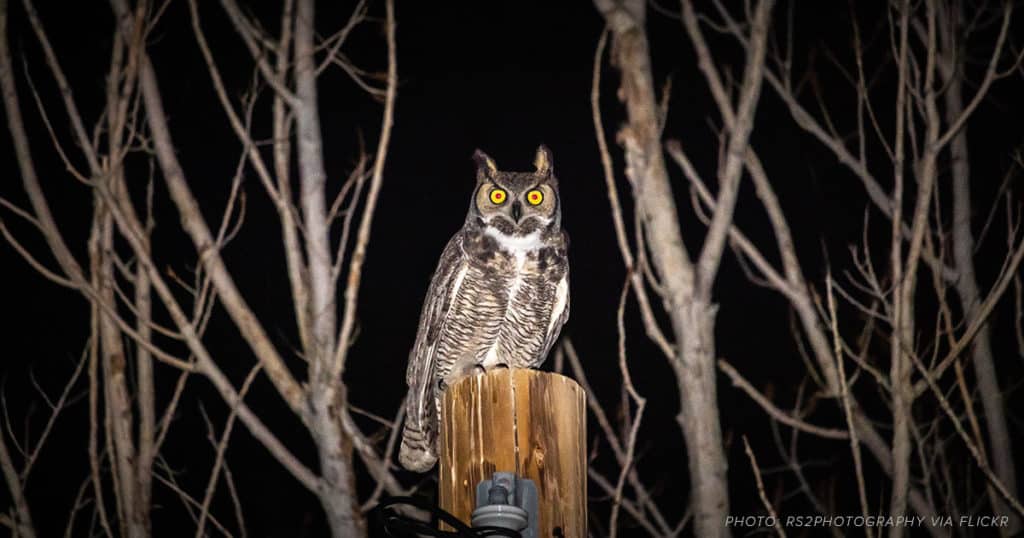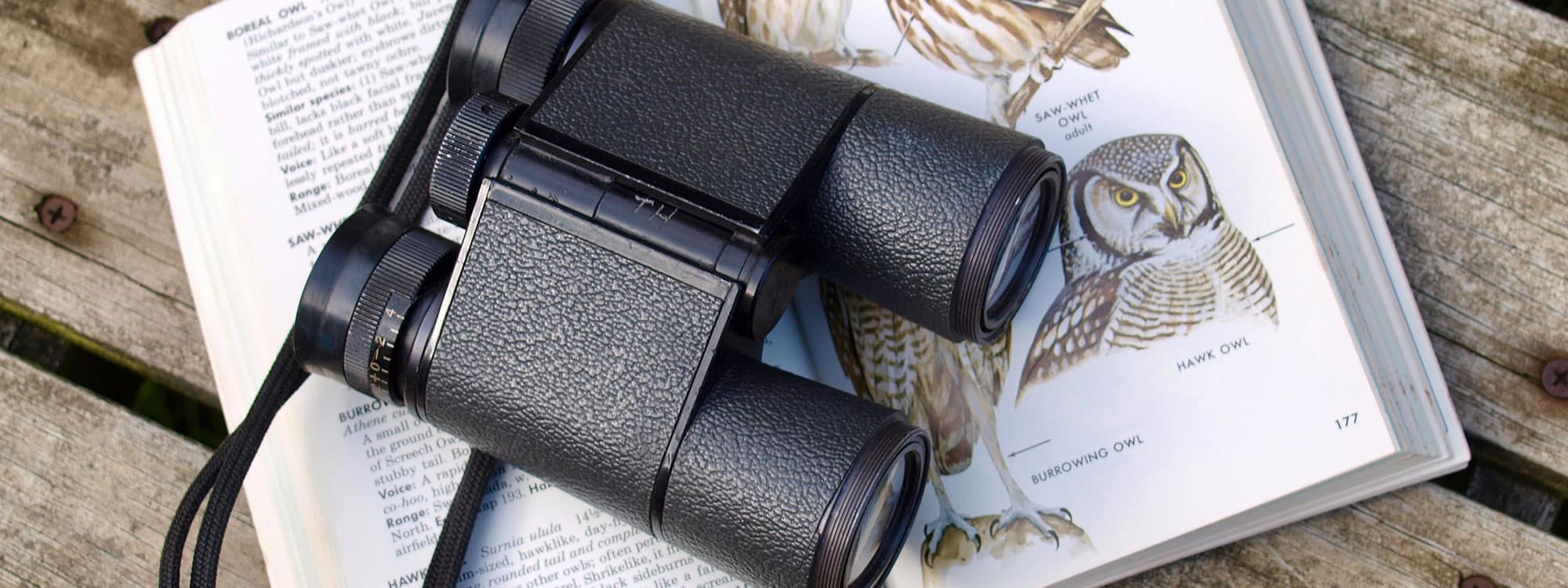I have a tall redwood tree in my backyard that two raptors have begun to use as perches, one in the day time and the other at night.

My day time visitor is a white-tailed kite, an accipiter that eats mostly small rodents. The white-tailed kite hovers above its prey, wings flapping, until it suddenly swoops down, talons out, and grabs its meal. This type of behavior is called hovering. The kite stays in the same spot in the air but must keep wings flapping to stay airborne. Larger raptors, like red-tailed hawks, can kite. They are able to stay still in place while airborne without flapping because of the larger surface area of their wings. So white-tailed kites can’t actually kite, they hover hunt!

At night, great horned owl hoots from the same backyard perch. Great horned owls are known as the “tigers of the night.” They eat mostly rodents but can take bigger prey, right up to house cat size. Everyone knows great horned owls have excellent night vision, but they have even better hearing. Owls have asymmetrical ears…one ear is higher than the other.
Fun Fact: The tuffs on the top of an owl’s head are not ears. The ears are slits on the side of the head under feathers.
Crooked ears enable owls to hear in “3-D”, so they can locate the exact location of prey by hearing alone in absolute darkness. With great eyesight and extraordinary hearing, the owl’s brain has little room left for smell, so that’s the sense owls lack. That would explain their very favorite prey animal — skunks!
I am grateful for these visitors as I spend more time at home and hope you find similar joy in the nature that can be found right in our own backyard.
Header Photo: Diane Helentjaris via Unplash



